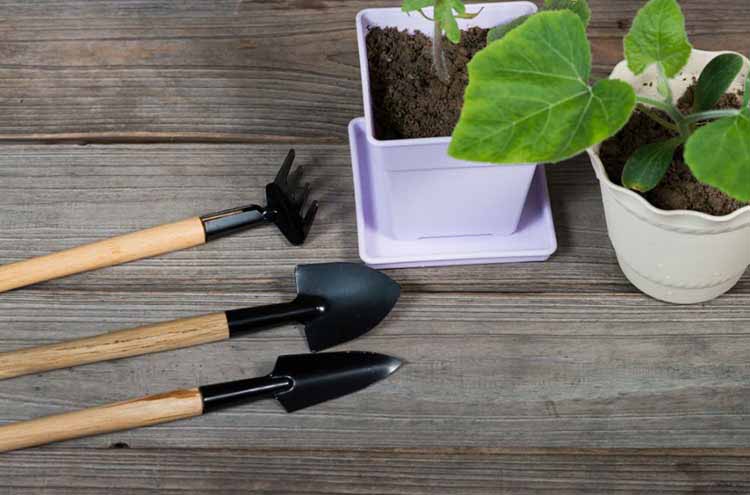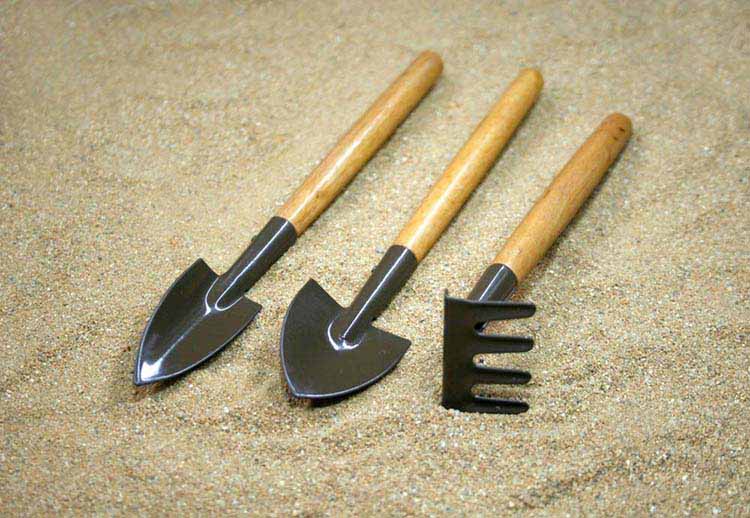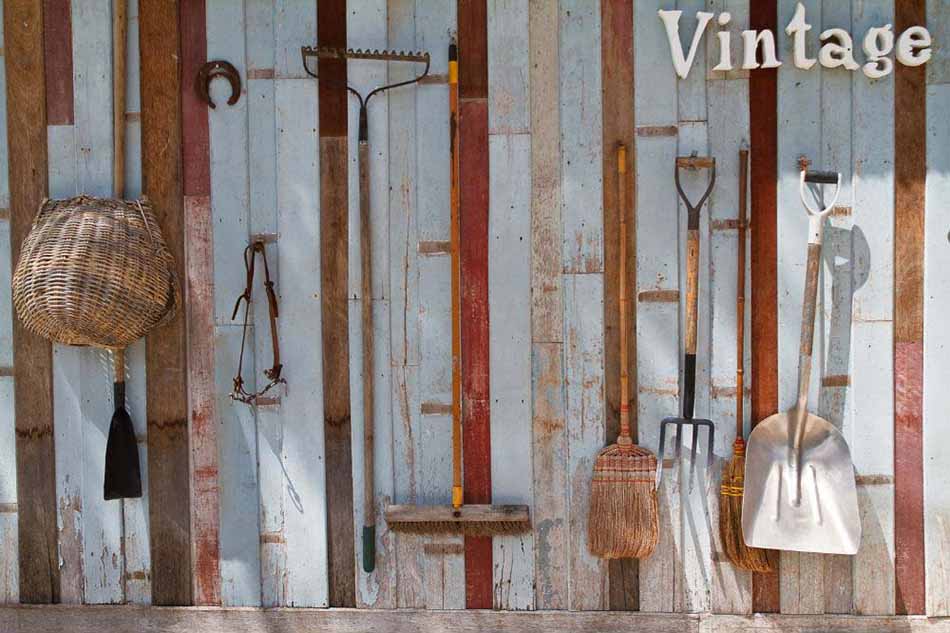Gardening can be a soothing hobby, a way to beautify your living space or a means to grow fresh fruits and vegetables. No matter the reason you find yourself digging in the dirt, your experience is vastly improved by using the right tools. Wooden handle garden tools, in particular, combine functionality, durability, and aesthetics, making them a favorite among green thumbs. In this post, we’ll explore the benefits of wooden handle garden tools and how they can enhance your gardening efforts.
Benefits of Wooden Handle Garden Tools
Gardening is a practice that not only involves skill and patience but also the right set of tools. Among the various options available, wooden handle garden tools have stood the test of time, offering numerous benefits to gardening enthusiasts. Below are some of the key advantages of choosing tools with wooden handles for your gardening needs:
Enhanced Comfort
Wooden handles have a natural warmth and smoothness to them, which provides a comfortable grip while working. This can help reduce hand fatigue and make long gardening sessions more manageable.
Durability and Strength
Wood is a strong material that can withstand the wear and tear of gardening tasks. When properly cared for, wooden handles can last for many years, making them a sustainable choice for environmentally conscious gardeners.
Recommended: Different Types of Gardening Methods
Reduced Vibration
Wood has a natural ability to absorb shock, and this is particularly beneficial when working with tools that cause vibration, such as rakes or hoes. The wooden handle dampens vibrations, reducing strain on your hands and arms.

Aesthetics
Wooden handles offer a timeless and classic look that many gardeners appreciate. They can add an aesthetic appeal to your collection of garden tools and complement the natural setting of your garden.
Eco-Friendly
Handles made of wood frequently originate from forests that are managed with sustainability in mind, making them a replenishable resource.
Additionally, at the end of their life, wooden handles are biodegradable, unlike their plastic counterparts.
Customization and Repair
Wood can be sanded down, painted, or stained, allowing you to customize the look of your garden tools to match your personal style or garden theme. Furthermore, wooden handles can often be repaired or replaced easily, extending the life of the entire tool.
Thermal Insulation
Wood has a lower thermal conductivity than metal, it ensures the handle’s temperature remains steady and comfortable, regardless of changes in the surrounding conditions. Consequently, there’s no worry about your tool handles getting too hot or too cold, even if they are left outside for a short period.
Better Grip
Handles made of wood typically provide a superior grip relative to those made of metal or plastic because they are less prone to slipping when moistened.
This improved grip can help prevent accidents and give you more control over the tool’s movements.
When choosing garden tools, consider the advantages that wooden handles offer and the ways they can improve your experience in gardening. Not only will they add efficiency and comfort to your work, but they’ll also bring an element of sustainable beauty to your shed or workspace.
Versatility and Function of Wooden Handle Garden Tools
Whether you’re tilling, weeding, or planting, there’s a wooden handle tool designed for the task. Some of the most common wooden handle garden tools include:
- Spades and Shovels: For digging and moving soil.
- Hoes and Cultivators: Essential for weeding and aerating the soil.
- Rakes: Useful for clearing leaves and spreading mulch.
- Trowels: Perfect for planting and transplanting small plants.
- Pruners: Ideal for trimming and shaping plants.
Each tool serves a specific purpose, ensuring that you work efficiently and effectively.

Care Tips for Longevity
Proper maintenance is crucial to prolong the lifespan of your wooden handle garden tools. Here are some simple care tips:
- Cleaning: After use, clean the metal parts to remove soil and moisture. Wipe the wooden handle with a damp cloth and dry thoroughly.
- Sanding: If the handle becomes rough, sand it lightly with fine-grit sandpaper to prevent splinters.
- Oiling: Periodically apply linseed oil or a natural wood conditioner to keep the wood from drying and splintering.
- Storage: Store your tools in a dry, covered area to prevent wood rot and metal corrosion.
How to Choose a Wooden Garden Tool
Gardening can be a meditative and rewarding experience, and having the right tools on hand is essential to enjoying the process. Wooden garden tools, in particular, offer a timeless appeal and can provide years of service if selected and cared for properly. Here’s how to choose the best wooden garden tools for your garden:
Consider the Type of Gardening You Do
Before buying any tool, think about the tasks you’ll be performing most often. Are you cultivating vegetables, maintaining flower beds, or perhaps pruning bushes and shrubs? Certain tools are designed for specific purposes, so select those that align with your gardening needs.
Recommended: Benefits of Gardening for the Elderly
Understand the Types of Wood
Wooden garden tools are typically made from a variety of woods including ash, oak, and bamboo. Each wood type has different characteristics:
- Ash: Renowned for its strength and flexibility, making it ideal for tool handles.
- Oak: Known for its durability and resistance to wear, perfect for heavy-duty tools.
- Bamboo: Lightweight and eco-friendly, bamboo tools are great for light cultivation and are inherently anti-bacterial.
Look for Quality Construction
Inspect the tool’s construction before making a purchase. Ensure that the wooden handle and metal head are securely attached. Forged tools, where the head and socket are made from one piece of metal, tend to be more durable than tools that have welded or screwed connections.

Evaluate the Handle Design
The handle should be comfortable to hold and the right length for your height. Ergonomically designed handles can reduce fatigue and minimize the chance of blisters. Also, check for a smooth finish to avoid splinters.
Check the Tool’s Balance
A well-balanced tool will feel comfortable and reduce strain on your body. Test the balance by holding the tool as you would when using it. The weight should feel evenly distributed, making it easier to control and use.
Consider the Environmental Impact
Sustainable gardening includes considering the environmental impact of your tools. Look for companies that source their wood responsibly or offer FSC-certified products, ensuring that the wood has been harvested sustainably.
Recommended: Different Types of Gardening Methods
Assess the Price and Warranty
Lastly, consider the price and whether the tool comes with a warranty. While high-quality wooden garden tools can be more costly initially, they often save money in the long run due to their durability and longevity. A good warranty can also provide peace of mind and protect your investment.
By considering these factors, you can select wooden garden tools that not only support your gardening needs but also bring a sense of tradition and natural beauty to the gardening experience.
In conclusion
Wooden handle garden tools not only add a touch of timeless elegance to your gardening arsenal but also offer comfort, durability, and sustainability. By choosing the right tools and caring for them properly, you will be able to enjoy the fruits of your labor for many seasons to come. Happy gardening!
